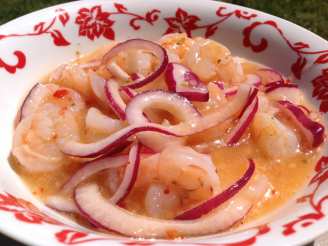If you love indulging in fresh, succulent shrimp whether dining at a trattoria in Rome or whipping up scampi at home, knowing how to say shrimp in Italian is essential. Italian offers several common terms for shrimp along with some delightful regional variations.
In this comprehensive guide, we’ll cover
- The most popular ways to say shrimp in standard Italian
- Useful examples of the words in sentences
- Regional dialect terms for shrimp
- Tips for pronunciation and usage
- How to discuss shrimp dishes in Italian
Follow along as we dive into all the ways to talk about everyone’s favorite decapod crustacean in the beautiful Italian language. Allora, andiamo!
Common Ways to Say Shrimp in Italian
The Italian language provides a few main ways to refer to shrimp in general conversation:
-
Gambero – The most universal Italian word for shrimp. Covers all shrimp species and sizes.
-
Gamberetto – A diminutive version expressing “small shrimp.” Adds a sense of endearment.
-
Scampo – Refers to larger shrimp varieties like langoustines or prawns.
Gambero is by far the most common term and is universally understood to mean shrimp. But the other variants add flair and nuance. Now let’s see some examples.
Examples of Shrimp Vocabulary in Italian Sentences
Here are some examples of these words for shrimp used in everyday Italian phrases and sentences:
-
Vorrei un piatto di gamberi per favore – I would like a plate of shrimp please.
-
La zuppa di pesce ha i gamberetti, calamari e cozze – The seafood soup has shrimp, squid and mussels.
-
Gli scampi alla griglia sono deliziosi! – The grilled shrimp are delicious!
-
Hai comprato i gamberoni o i gamberetti? – Did you buy the big shrimp or the small shrimp?
As you can see, these versatile terms for shrimp adapt well to discussing menus, recipes, ingredients, and more.
Typical Shrimp Names in Italian Dialects and Regions
In addition to the standard names, some Italian dialects and regions have their own special terms for shrimp. Here are a few examples:
-
Mazzancolle (Central Italy) – Refers to larger shrimp varieties.
-
Cicenielli (Southern Italy) – Means small shrimp often used in regional dishes.
-
Nutrieddu (Sicily) – Another Sicilian term for tiny flavorful shrimp.
-
Gamberino (Tuscany) – Affectionate Tuscan term for baby or small shrimp.
Italians are renowned for their colorful regional dialects, which lend character and history to the language. While you don’t need to know them all, being aware of some regional shrimp names adds Italian flair.
Handy Tips for Pronouncing Shrimp Vocabulary
Here are some tips for tackling the pronunciation of Italian shrimp vocabulary:
-
Roll the R in “gambero” and “gamberetto.”
-
Stress the second-to-last syllable in “gamberetto” and “scampo.”
-
Listen to audio of native speakers saying the words. Imitate their rhythms and intonation.
-
When in doubt, ask an Italian friend! They’ll be happy to help you perfect your accent.
-
Practice the words out loud regularly. Confidence builds through repetition.
Mastering the crisp Italian consonants and melodious vowels takes practice. Be patient with yourself as you improve – your efforts will be rewarded!
How to Discuss Shrimp Dishes and Cuisine
Once you know the basic terms for shrimp, you can discuss shrimp cuisine in Italian. Here are some phrases that may come up:
-
Questo ristorante serve ottime zuppe di gamberi. – This restaurant serves excellent shrimp soups.
-
Volete ordinare degli spaghetti allo scoglio con i gamberoni? – Do you want to order the mixed seafood spaghetti with big shrimp?
-
Ho cucinato gamberetti al vino bianco per cena. – I cooked shrimp in white wine for dinner.
-
Abbiamo comprato gamberi freschi oggi al mercato. – We bought fresh shrimp at the market today.
-
I gamberetti sono molto versatili in cucina. – Shrimp are very versatile in the kitchen.
As you can see, once you know the basic terms for shrimp, you’ll be able to discuss recipes, restaurants, ingredients, and preparation techniques.
Get Excited for Italian Shrimp!
The next time you’re cooking shrimp scampi or linguine alle vongole, you can call the shrimp by their proper Italian names. From ordering at restaurants to shopping at markets to preparing home feasts, you’ll impress everyone with your bilingual shrimp skills.
Let us know if you have any other Italian food vocabulary questions. We’re happy to help you continue your journey toward fluency. Buon appetito, and enjoy those gamberi!

Example Sentences in Context.



Shrimps is translated in Italian by…

